Gas masks, face paint, shields: Battle gear for a Venezuela protest
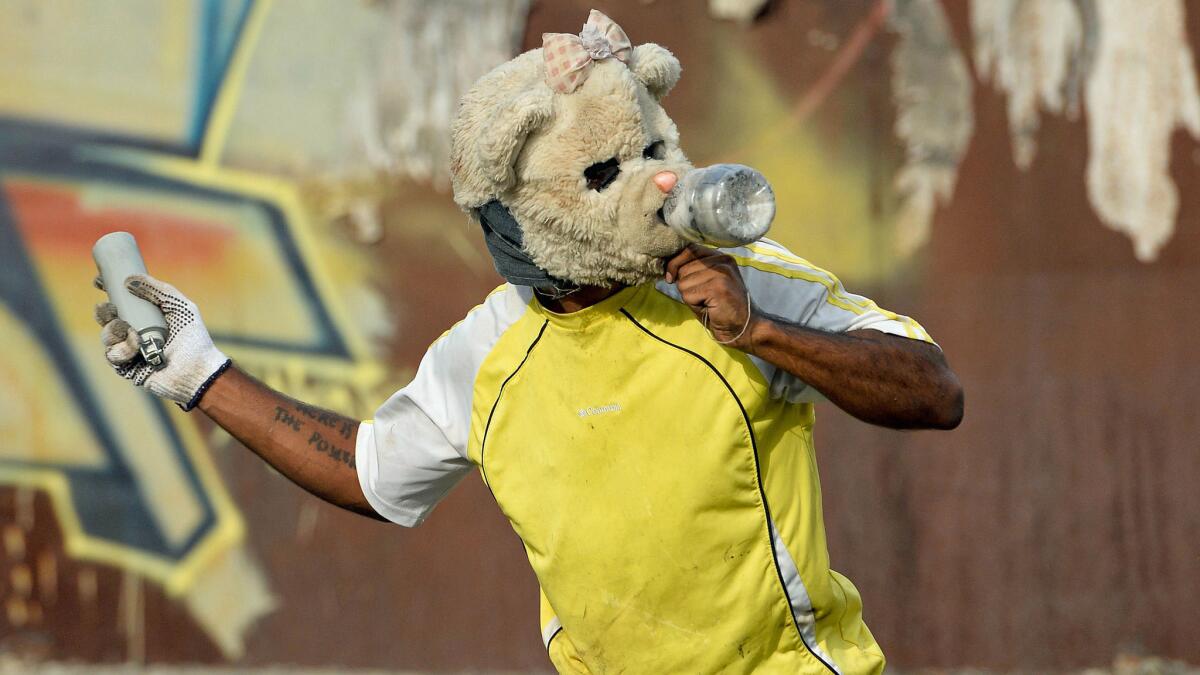
- Share via
The demonstrators who have flooded Venezuela’s streets in recent weeks to protest the government of embattled President
At least 36 people have been killed and hundreds more injured since the protests began in early April.
The latest clashes came on Thursday, when opposition marchers lighted fires and hurled stones at security forces along Caracas’ main thoroughfare, only to be doused with tear gas.
One thing that has characterized the protests in the crisis-ridden country — where consumer goods can be hard to acquire — has been the make-do nature of the gear donned by demonstrators before they take to the streets.
We asked one frequent protester, 21-year-old university student Alberto Castillo, to share what he’s learned about gearing up to protest on the front lines.
Colors of a nation
Protests are awash in the colors of the Venezuelan flag, which symbolize another struggle, the fight for independence from Spain. At the nation’s founding, yellow stood for gold and blue for the ocean separating Venezuela from bloody Spain, represented by red.
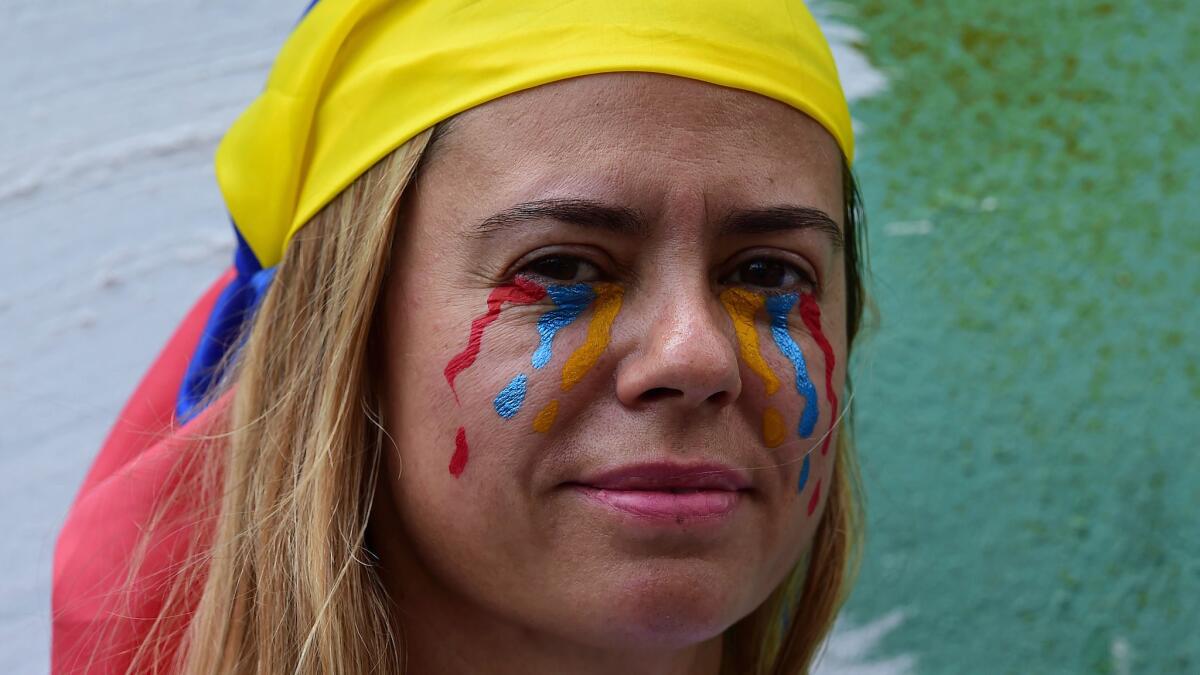
Venezuelan opposition activists march to the Catholic Church’s episcopal seat in a quiet show of condemnation of the government of President NIcolas Maduro, in Caracas, on April 22, 2017, Venezuelans gathered Saturday for “silent marches” against President Nicolas Maduro, a test of his government’s tolerance for peaceful protests after three weeks of violent unrest that has left 20 people dead. / AFP PHOTO / RONALDO SCHEMIDTRONALDO SCHEMIDT/AFP/Getty Images ** OUTS - ELSENT, FPG, CM - OUTS * NM, PH, VA if sourced by CT, LA or MoD **
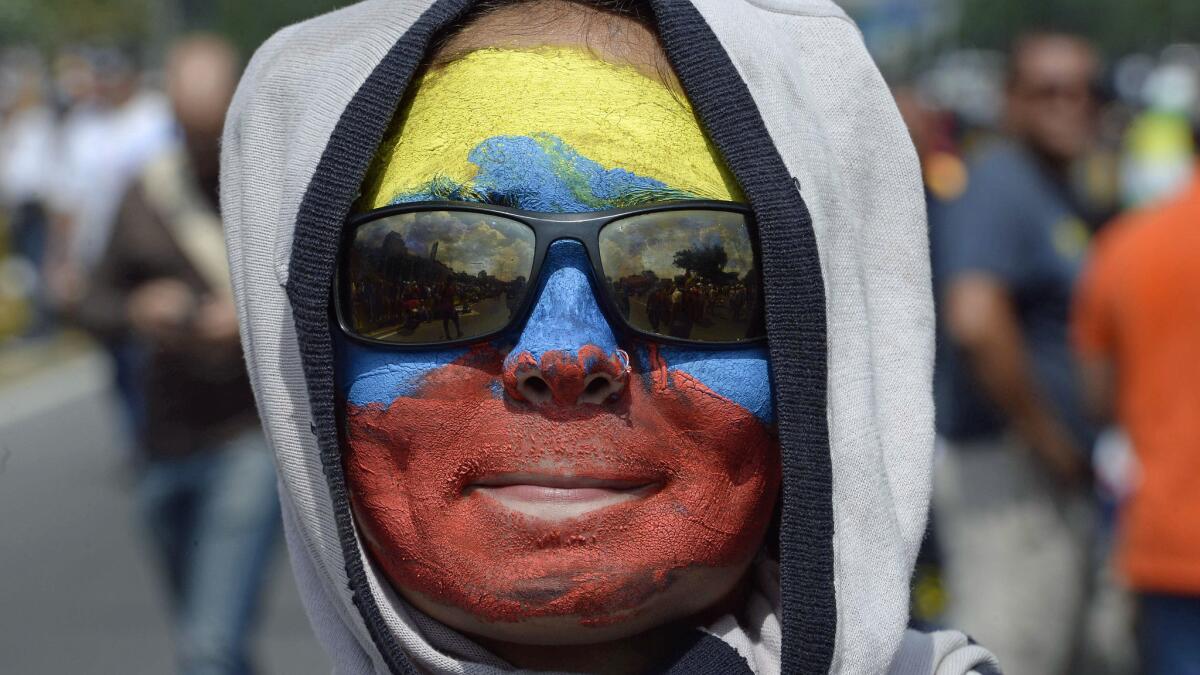
A Venezuelan opposition activist demonstrates against President Nicolas Maduro in Caracas, on April 24, 2017. Protesters rallied on Monday vowing to block Venezuela’s main roads to raise pressure on Maduro after three weeks of deadly unrest that have left 21 people dead. Riot police fired rubber bullets and tear gas to break up one of the first rallies in eastern Caracas early Monday while other groups were gathering elsewhere, the opposition said. / AFP PHOTO / Federico PARRAFEDERICO PARRA/AFP/Getty Images ** OUTS - ELSENT, FPG, CM - OUTS * NM, PH, VA if sourced by CT, LA or MoD **
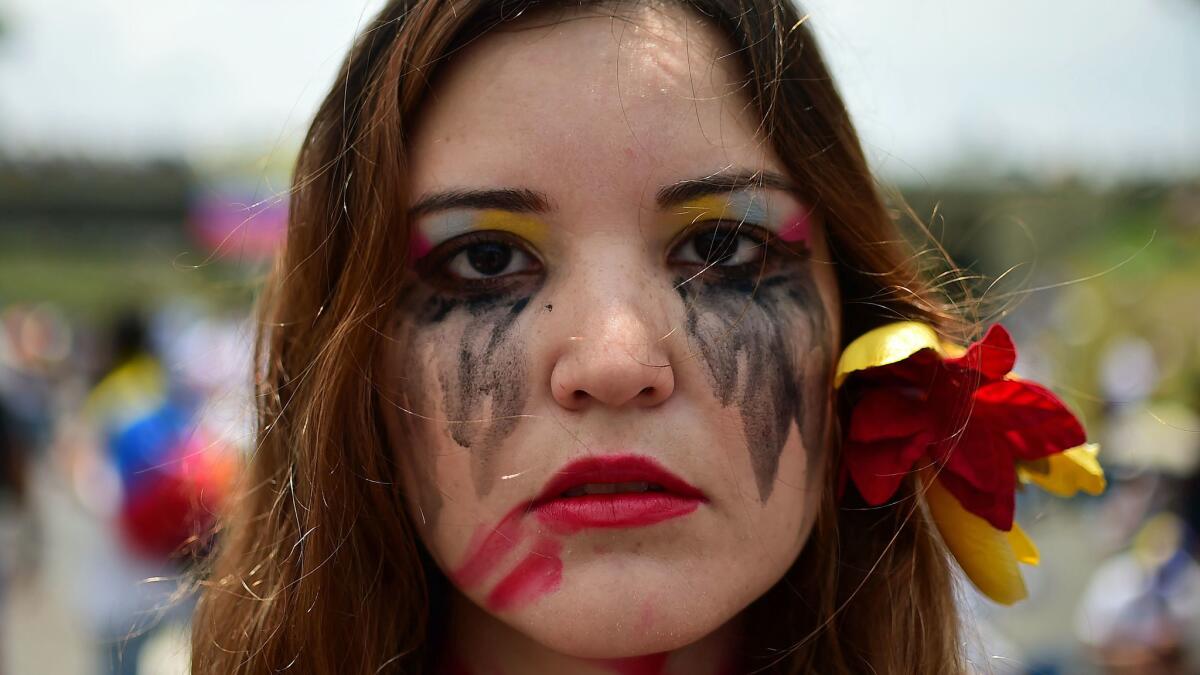
TOPSHOT - A Venezuelan opposition activist participates in a sit-in to block the Francisco Fajardo motorway in Caracas, on April 24, 2017. Protesters plan Monday to block Venezuela’s main roads including the capital’s biggest motorway, triggering fears of further violence after three weeks of unrest left 21 people dead. / AFP PHOTO / RONALDO SCHEMIDTRONALDO SCHEMIDT/AFP/Getty Images ** OUTS - ELSENT, FPG, CM - OUTS * NM, PH, VA if sourced by CT, LA or MoD **
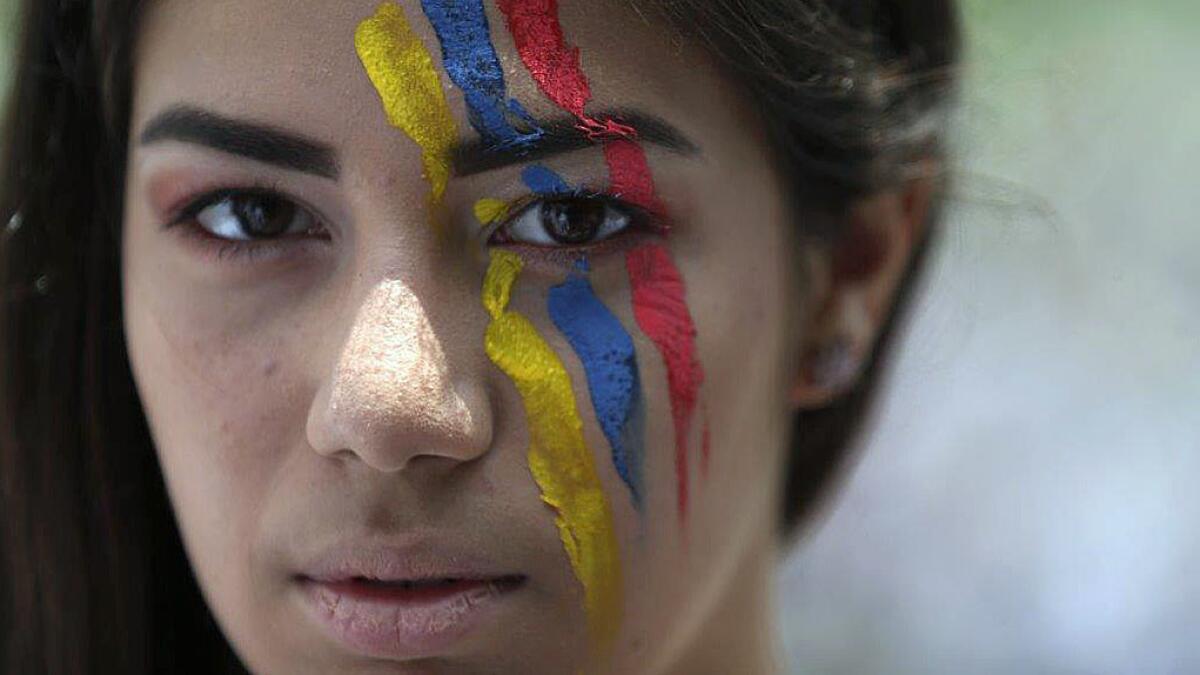
TOPSHOT - Protesters with flags and signs chant during a rally against the Venezuelan government at a rally in front of the Freedom Tower in Miami, Florida, on April 19, 2017. The United States is “concerned” about the situation in Venezuela, where deadly clashes broke out April 19 in mass protests against President Nicolas Maduro, US Secretary of State Rex Tillerson said. / AFP PHOTO / RHONA WISERHONA WISE/AFP/Getty Images ** OUTS - ELSENT, FPG, CM - OUTS * NM, PH, VA if sourced by CT, LA or MoD **
Fighting back, with one glove
At protests, they seem to be everywhere, young men with just right-handed gloves, usually heavy workmen’s gloves. They wear them to hurl tear gas canisters back at police. “The first time I grabbed one, I didn’t know any better and it burned me,” Castillo said. “Since then I have used a glove, a thick one that resists the heat.”

A shield, any shield
Protesters routinely show up at protests carrying improvised shields — of wood, metal, particle board, whatever. Castillo recalled a friend who was injured in one protest. “The police shot a tear gas bomb directly at one friend and it tore off one of the fingernails of his right hand. Later, one bounced off the street and hit him in the groin,” he said. Since early April, sometimes violent clashes with police and troops have left 36 dead and more than 400 injured; more than 1,200 have been arrested.

A student movement
The protesters range in age — Castillo’s mother joins him on marches — but many demonstrations are driven by students. Castillo, a thin, boyish architecture student at Central University of Venezuela, recently prepared to attend a memorial for a student cut down in the protests. “There is a special event for a kid who they killed yesterday with a tear gas canister. We’re going to pray for the fallen and then go on to the march,” he said.
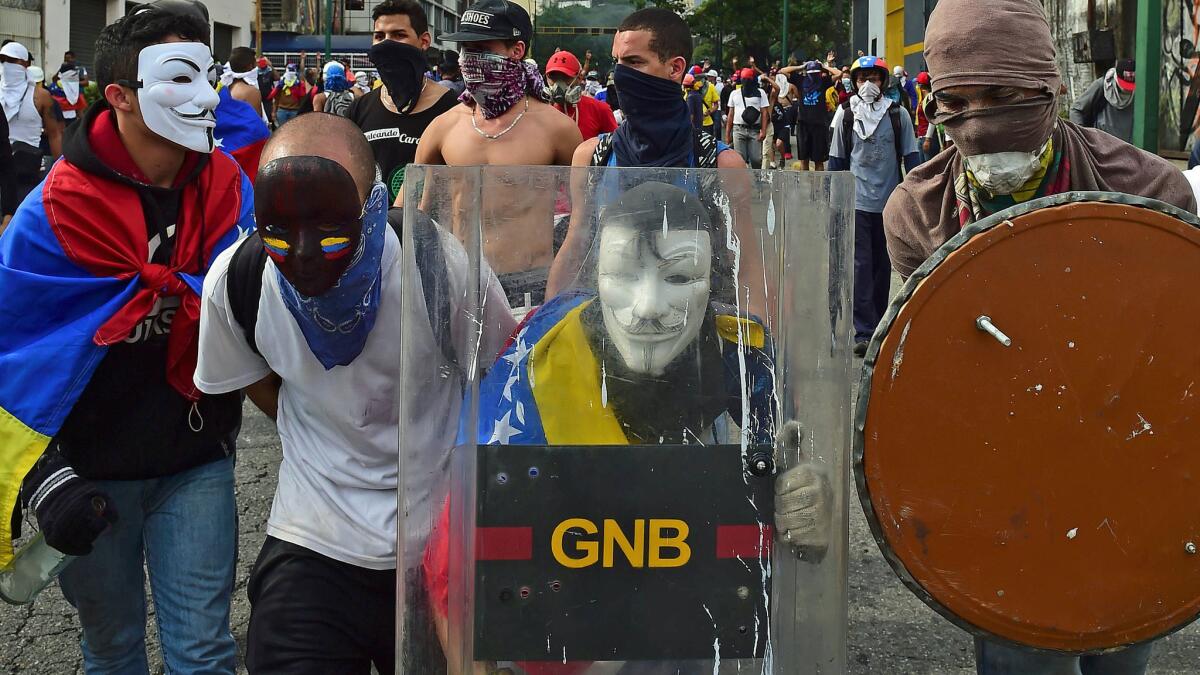
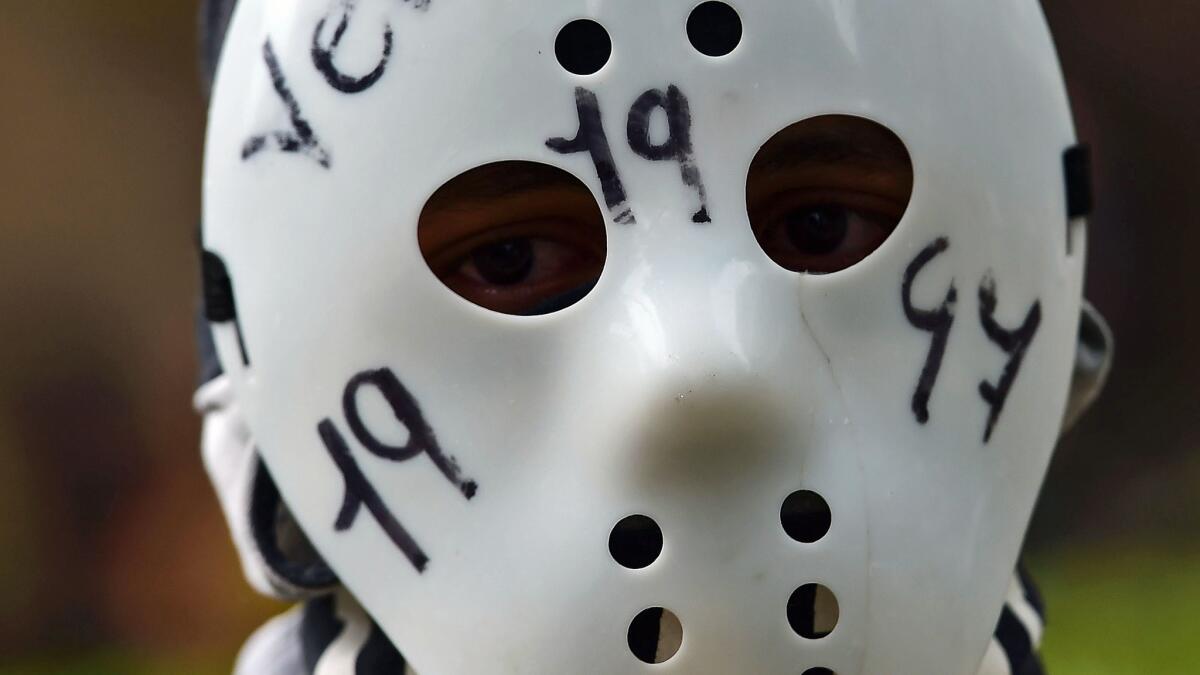
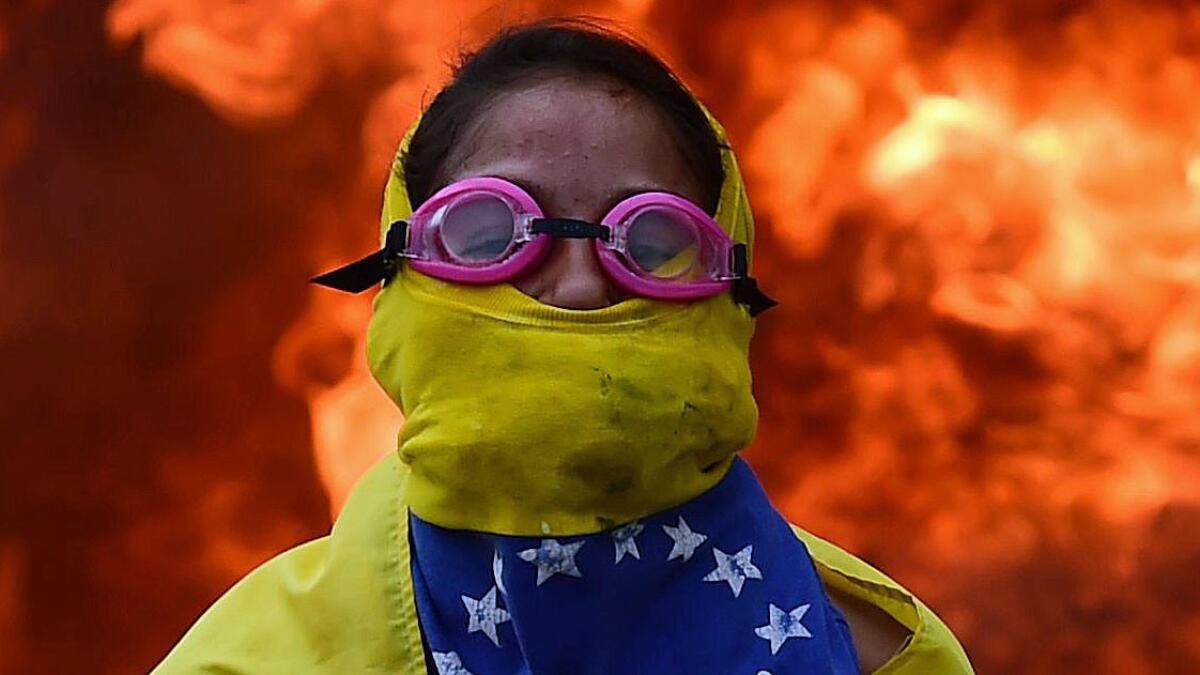
Fending off tear gas
Gas masks, real and improvised, are a must. “Before, I didn’t use one, just my shirt,” Castillo said. “Later, I tried diapers soaked in vinegar. Now I use a mask I make with a canned ham tin filled with cotton, charcoal and held together by elastic. It’s not the best, but it helps.” Castillo also brings Maalox. Protesters rub the antacid on their faces in hopes it will neutralize the tear gas.
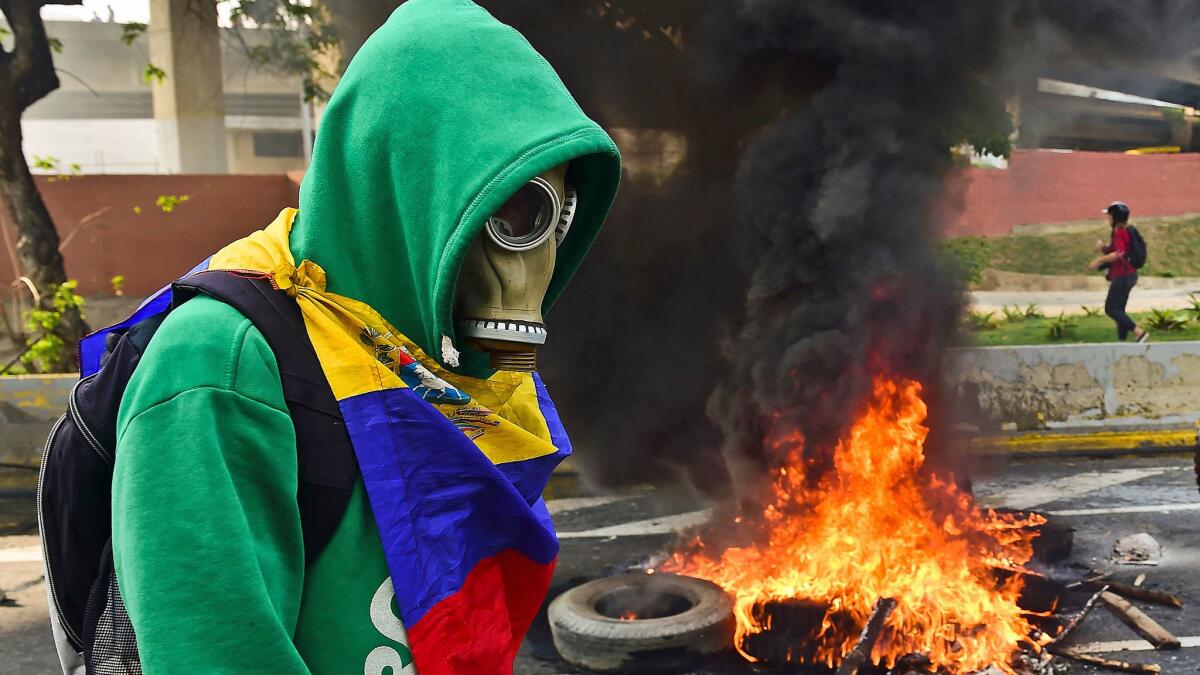
Helmets and hope
Like many protesters, Castillo wears a motorcycle helmet. Others strap on bicycle helmets — not as strong but protection of a sort. Protesters denounce what they say are Maduro’s undemocratic schemes to enhance his power. Still, despite the dismal economy, rising crime and mass shortages of medicines and food, Castillo envisions a better Venezuela. He has no plans to leave the country, though his father wishes he would. His hope? “That there is liberty, that I can walk on the street and not see people eating garbage. That I can leave [home] feeling secure I won’t be killed, because that’s the chance you take these days.”
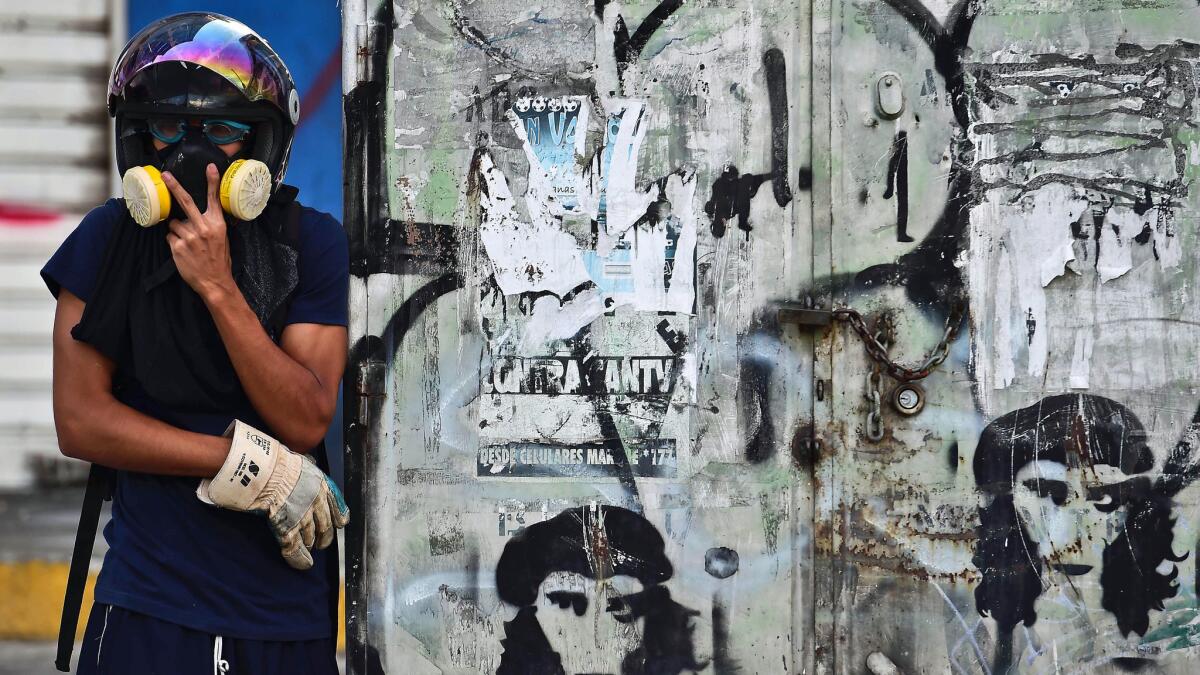
Mogollon is a special correspondent. Chris Kraul in Bogota, Colombia, contributed to this report.
UPDATES:
May 4, 11:55 a.m.: This article was updated to report the death toll had risen to 36.
3:20 p.m.: This article was updated with news of Wednesday’s protests.
This article was originally published at 3 a.m. May 3.
Sign up for Essential California
The most important California stories and recommendations in your inbox every morning.
You may occasionally receive promotional content from the Los Angeles Times.







